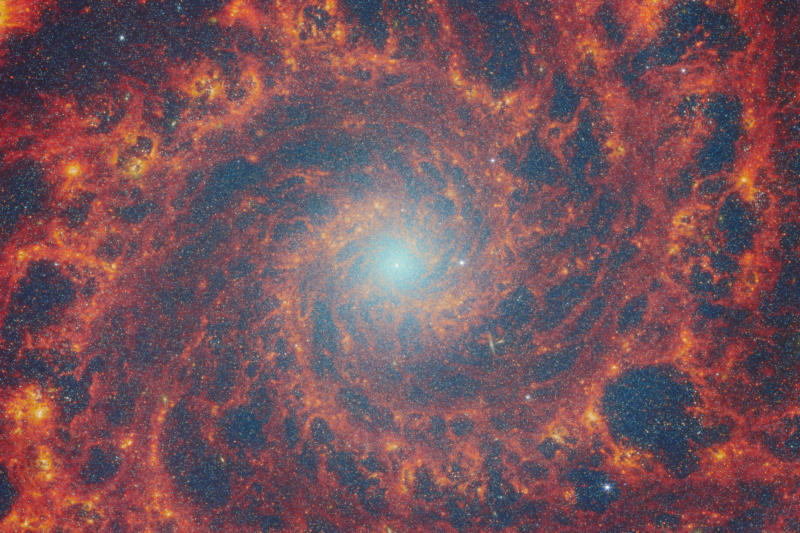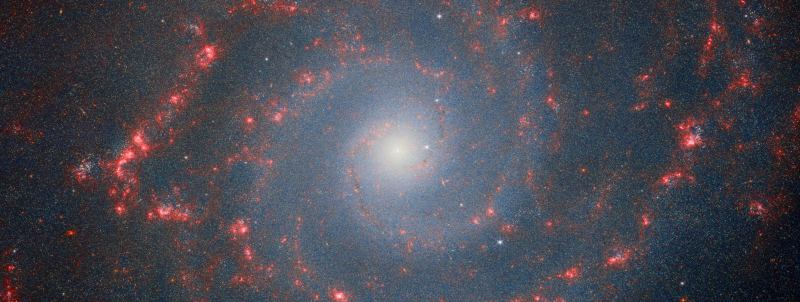NASA has released an image taken by the James Webb Space Telescope (JWST) of the galaxy known as M74 and NGC 628, and also known as the Phantom. The device first captured it in 2022.

Galaxy NGC 628 – image from MIRI and NIRCam. Image source: esawebb.org
The old image was taken using the MIRI (Mid-InfraRed Instrument) instrument on the James Webb Telescope; in the new one, MIRI data was combined with data from the Near-InfraRed Camera (NIRCam) instrument, which operates in the near-infrared range. This helped scientists from the Feedback in Emerging extrAgalactic Star clusTers (FEAST) project study the stellar nurseries located in this area.

Galaxy NGC 628 – NIRCam image
Stellar nurseries are areas in space filled with gases and molecular clouds. Stars and planets are born here, which is why they are often called star formation regions. The main goal of the FEAST project is to study the formation and interaction of stars outside our galaxy. By counting the amount of energy that stars emit into their environment, scientists can better understand the mechanisms behind their creation.
By combining MIRI and NIRCam data, scientists have reason to conclude that the spiral arms of the M74 galaxy are the most active star-forming regions in it. The NIRCam image revealed hydrogen emission lines, which are less affected by dust, and which show where new massive stars are forming.